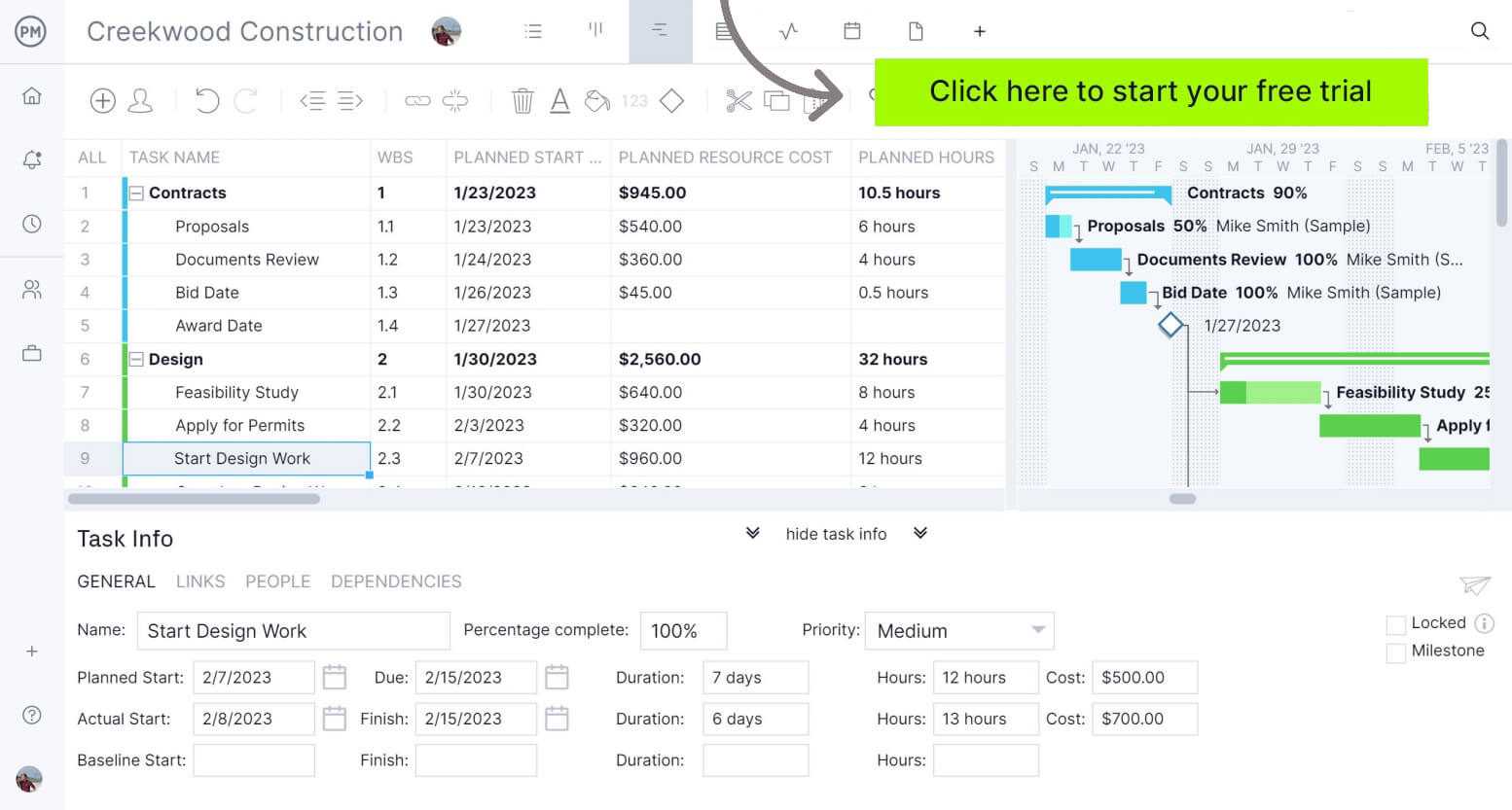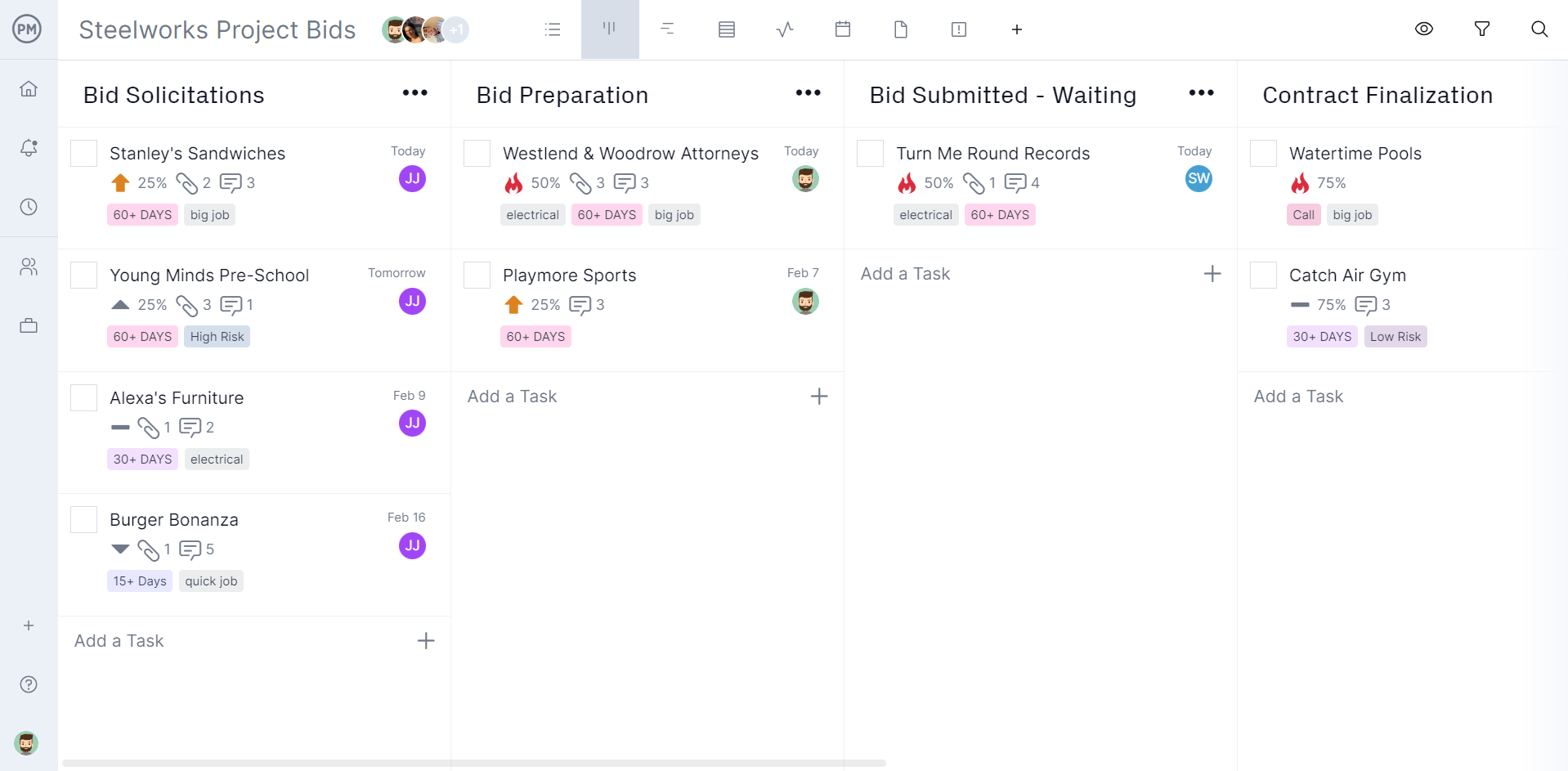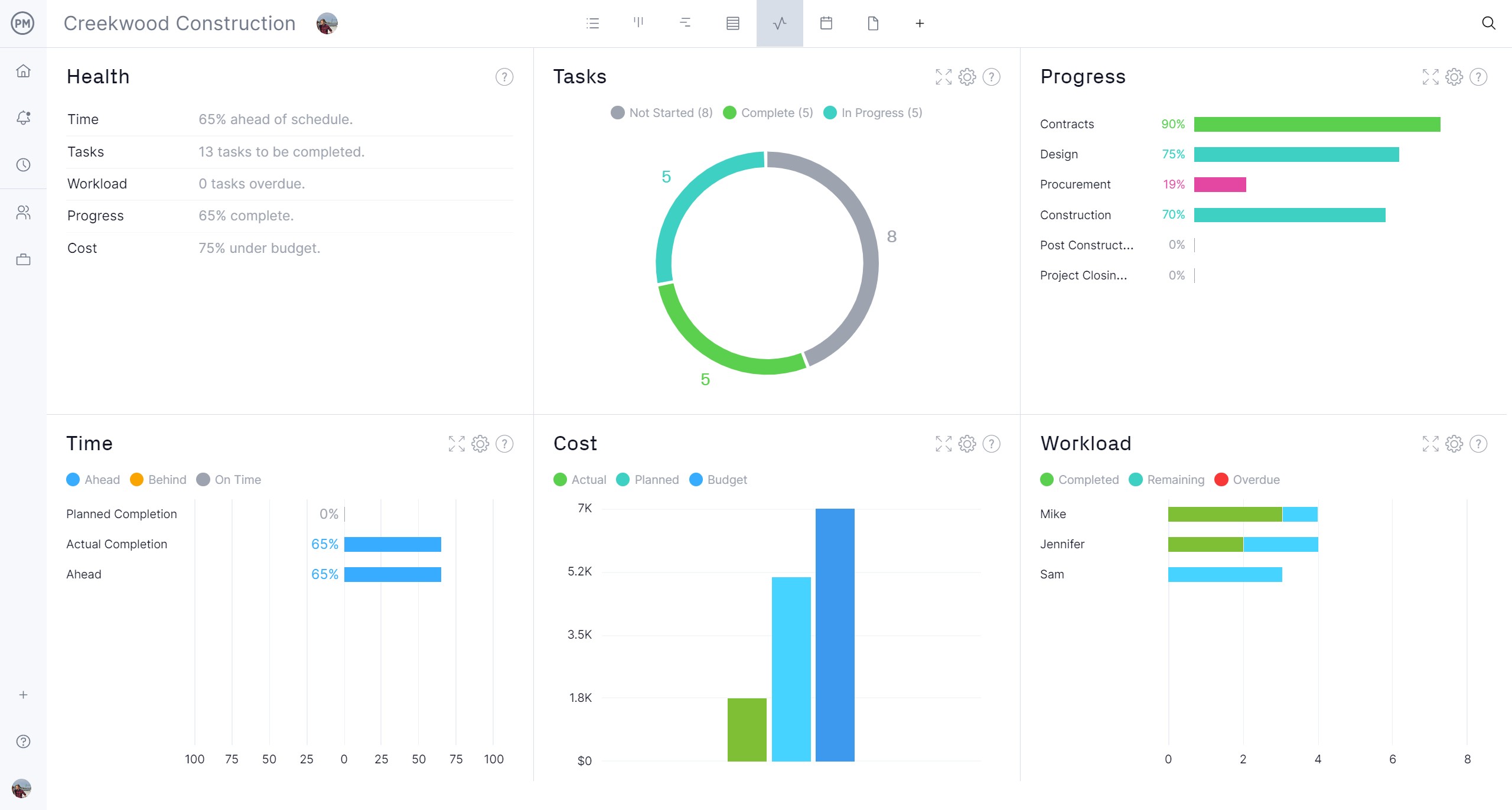Construction projects are often long and complicated endeavors. They’re also expensive. Payment is determined in the contract process, which includes the contractor payment schedule.
What’s included in the contractor payment schedule and the different types are a critical part of the professional relationship between the project owner and the general contractor. Let’s look at the construction payment schedule to fully understand its benefits.
What Is a Contractor Payment Schedule?
The contractor payment schedule is how contractors in construction projects are paid. It’s unusual for contractors to get a payment for their work in one lump sum. Therefore, a construction payment schedule shows how they receive compensation for their work over the project’s life cycle.
This contractor payment schedule is defined in the construction contract and sets pay over regular intervals across the project schedule. This sets clear payment terms for the contractor and reduces the risk of them receiving late payments or even no payment at all. The construction payment schedule can be looked at as a sort of insurance.
One goal of the contract negotiations between the project owner and the general contractor is to draft a mutually beneficial contractor payment schedule that aligns with the project requirements and protects all the parties involved. Because the construction payment schedule is linked to the project schedule, it should be part of any project plan.
Incorporating the construction payment schedule with the execution of the project can be seamlessly achieved with project management software. ProjectManager is award-winning project and portfolio management software with robust Gantt charts that plan, manage and track schedules in real time.
Not only can general contractors include the contractor payment schedule in their project timeline, but they can link all four types of task dependencies to avoid costly delays that cut into their profit margin. They can also filter for the critical path to identify essential tasks to keep the project on schedule and set a baseline to track planned versus actual effort in real time. Get started with ProjectManager today for free.

What Should Be Included In a Contractor Payment Schedule?
A construction payment schedule is part of the contract in a construction project. But beyond that, what’s included in that contractor payment schedule can vary. However, most usually include the following.
- Project Information: The name of the project, where it’s located and a description of the project is always in the contract, including the start date and its expected duration.
- Names of Those Involved: Contracts list the names of the contractor, project owner and subcontractors who are also bound by the contract.
- Scope of Work: Include the tasks, materials and services covered in the contract.
- Payment: Detail the payment due to all parties involved and the due date for those payments.
- Frequency: Define the timing of payments, such as due dates or the intervals at which payments must be made. This is often tied to milestones, the completion of specific tasks or can be scheduled for monthly, bi-weekly, etc.
- Method of Payment: How will payments be disseminated, such as by check, electronic transfer, etc.
- Terms: Define the payment terms, as in any penalties or invoicing requirements.
- Method of Resolving Disputes: Outline the process for payment-related disputes, such as mediation or arbitration procedures.
- Actual Payment: Note the amount to be paid and the date by which it must be paid.
- Signatures: There must be signature lines for all involved parties and another line to indicate the date the contract is signed.

Get your free
Construction Payment Schedule Template
Use this free Construction Payment Schedule Template for Excel to manage your projects better.
Types of Construction Payment Schedules
All parts of a construction contract are important. The contractor payment schedule is one of the most important pieces to nail down for the general contractor and the project manager alike. Not only does it define payment, but it can help keep the schedule on track by avoiding disputes and staying within the budget.
The contract type can impact the construction payment schedule. Therefore, it’s important to understand the variations of this important construction document as each has its advantages and disadvantages. Here are six commonly used types of constructor payment schedules.
Deposit and Final Payment
This type of contractor payment schedule is ideal for smaller construction projects. The deposit covers materials, permits and sometimes labor. The final payment deals with the profits and expenses. This way, a general contractor doesn’t have to front all the money and the property owner has the balance to ensure that work is done to their satisfaction.
Progress Payments
Medium-to-large construction projects need a different type of contractor payment schedule. Progress payment means that the payments come at specific times during the execution of the project. There are many ways in which a progress payment can be given out. The last four types of construction payment schedules explain the different types of progress payments.
Time-Based Payments
The payments are broken up into equal distributions. This is usually done monthly with set dates for payment delivery. This payment schedule is clearly defined in the contract, however, it’s flexible and can be adjusted to respond to change orders or delays as they occur.
Milestone-Based Payments
This also outlines payments over time, but that time is defined by specific stages of the project. As one project phase ends, which is a milestone on the schedule, the payment is released. Or it could be whatever is defined as a milestone. When that work is done, the contractor is paid. This is found in larger construction projects and the pay acts as payment for the completion of smaller projects within the larger one.
Completion-Based Payments
This progress payment isn’t held until the end of the project but is paid off at regular intervals. These intervals are based on the project’s progress, such as a percentage. It can be hard to determine the percentage of completion, therefore, this type of construction payment schedule should only be used when projects are clear with itemized budgets and schedules of value.
Retainage
A portion of the payment that the project owner or general contractor withholds until the project reaches substantial completion. This percentage of the total project payment is removed from each of the progressive payments.
Construction Payment Schedule Sample
To better understand a construction payment schedule, it helps to have an example. Let’s take a contractor working on building a deck for a homeowner’s house. The general contractor and the property owner have agreed on a deposit and final payment of $4,000.
Therefore, the contractor can ask for $2,000 upfront to pull permits for the job and purchase materials. The project owner will then pay the contractor the balance once the job is completed. This will cover the rest of the materials, the contractor’s profit and any labor costs the contractor paid to subcontractors.
The benefit, as noted, is that the contractor doesn’t have to pay for the entire job and the homeowner has insurance that the job will be done to their satisfaction. The balance of the payment is the incentive for the contractor and the insurance for the homeowner.
Contractor Payment Schedule Template
Use this free construction payment schedule template to streamline payroll. It has everything necessary to capture the payment process and track payment throughout the life cycle of the construction project. There’s a top section for general project information, such as its name, project owner, general contractor and subcontractors.

Underneath that is a grid with columns for invoice numbers, work description, who is being paid, on what date, whether it’s autopay or not, the amount and even the retainage. Following that is a payment status. This template is divided into months, but the template is fully customizable so users can change it to quarterly, milestones or however the payment will be processed.
Benefits of Using a Contractor Payment Schedule In Construction
Agreeing on a payment structure before work starts on a project is always advisable. The project owner and the contractor must have a legally binding contract that they both sign to ensure that everyone knows what’s expected and how it will be compensated for.
Using a contractor payment schedule is but one part of the larger contract, this one dealing with money that will be paid and how it will be delivered. A construction payment schedule ensures that there will be a timely and structured monetary exchange. It outlines when and how payments will be made.
More Construction Project Management Templates
Once the contract is signed and all parties have agreed on a contractor payment schedule, then the work begins. But before ground can be broken, a detailed budget and schedule will be created. Construction project templates can help facilitate this process. Below are a few free construction project management templates available for download.
Construction Budget Template
The more accurate the construction budget, the safer a contractor’s profit margin. To ensure that your cost forecast is as close as possible, use this free construction budget template for Excel. It allows users to determine labor, materials and miscellaneous costs for every task. It even helps track actual costs against the planned ones to help stay on budget.
Construction Schedule Template
To stay on budget requires an understanding of the schedule. The free construction schedule template takes users into the ProjectManager software where Gantt charts can organize tasks and deliverables, allocate assets, plot milestones, filter for the critical path, link dependencies and more to stay on track and deliver the project on time.
Construction Estimate Template
The ability to forecast project costs is critical to delivering a project within budget while keeping a healthy profit margin for the contractor. Use this free construction estimate template for Excel to come up with accurate estimates by breaking the project into phases and determining the labor and material costs for each.
How ProjectManager Helps Manage Construction Payment Schedules
While templates can be useful when planning a construction project, their limitations become obvious once the work begins. Templates are static documents. They take time to update manually and they’re not conducive to collaboration. That’s why general contractors use construction project management software to plan, manage and track their projects.
ProjectManager is award-winning construction project management software with robust Gantt charts to create schedules and budgets, allocate resources and more. There are also multiple project views to track construction payment schedules.
Map Construction Payment Schedule on Kanban Boards
To ensure that payments are delivered as agreed upon, map out that process on customizable kanban boards. Each column can be titled for the month, quarter, milestone or whatever the frequency of payment is. Attach the contract to the kanban card, use a tag to distinguish it from other task cards and set up recurring tasks as reminders for when a payment is due. As payments are received, move the kanban card from one column to the next to track your contractor payment schedule.

Monitor Project Costs With Timesheets and Real-Time Dashboards
Keep an eye on labor and other resource costs to ensure that the budget is being kept to and not eating into the profit margin. There are several ways to do this. One, secure timesheets capture labor costs and provide transparency into how far the team is on completing their tasks and the costs associated with that work. For a high-level overview, real-time dashboards constantly capture live data and display it on easy-to-read graphs and charts that show costs, time and more key performance metrics (KPIs).

Related Contractor Management Content
There’s a lot more to contractor management than construction payment schedules. ProjectManager isn’t only software, but the online hub for all things project management, with weekly blogs, tutorial videos, and, of course, free templates. Here are a few of the contractor management-related pieces of content that we’ve recently published.
- Contractor Management: A Key to Successful Projects
- What Is a Subcontractor? Understanding Subcontractor Management
- Construction Cost Management: A Quick Guide
ProjectManager is online construction management software that connects teams whether they’re in the office, at the job site or anywhere in between. They can share files, comment at the task level and stay updated with email and in-app notifications. Get started with ProjectManager today for free.



